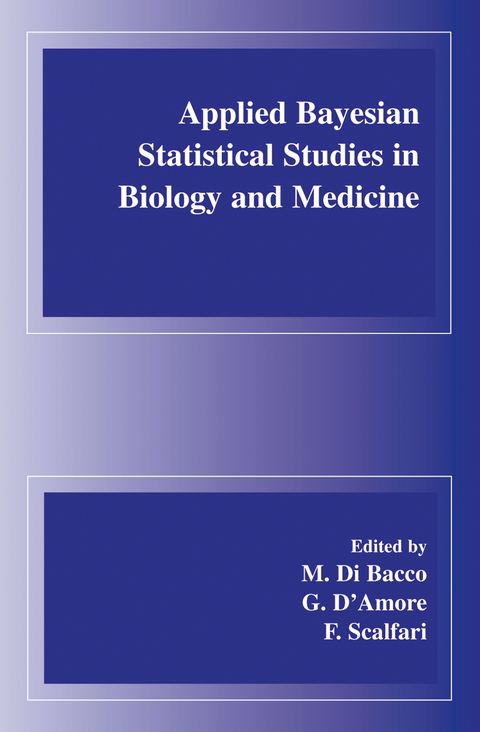
Applied Bayesian Statistical Studies in Biology and Medicine
Springer-Verlag New York Inc.
978-1-4020-7548-3 (ISBN)
It was written on another occasion· that "It is apparent that the scientific culture, if one means production of scientific papers, is growing exponentially, and chaotically, in almost every field of investigation". The biomedical sciences sensu lato and mathematical statistics are no exceptions. One might say then, and with good reason, that another collection of bio statistical papers would only add to the overflow and cause even more confusion. Nevertheless, this book may be greeted with some interest if we state that most of the papers in it are the result of a collaboration between biologists and statisticians, and partly the product of the Summer School th "Statistical Inference in Human Biology" which reaches its 10 edition in 2003 (information about the School can be obtained at the Web site http://www2. stat. unibo. itleventilSito%20scuolalindex. htm). is common experience - and not only This is rather important. Indeed, it in Italy - that encounters between statisticians and researchers are sporadic and hasty. This is not the place to justify this statement, which may sound too severe, as this preface would become much too long. It is sufficient to point out that very often whoever introduces young biologists and medical doctors to inductive reasoning about "data" either does not have a real interest in the concrete and specific meaning of the data or - if intereste- does not have a solid statistical background. In other words, he is usually a "theoretical" statistician or a biological or medical "technician".
1. Some reflections on the current state of statistics.- 2. Answering two biological questions with a latent class model via MCMC applied to capture-recapture data.- 3. On the Bayesian inference of the Hardy-Weinberg equilibrium model.- 4. Identifying a Bayesian Network for the problem “Hospital and families: the analysis of patient satisfaction with their stay in hospital”.- 5. Reliability of GIST diagnosis based on partial information.- 6. Comparing two groups or treatments-a Bayesian approach.- 7. Two experimental settings in clinical trials: predictive criteria for choosing the sample size in interval estimation.- 8. Attributing a paleoanthropological specimen to a prehistoric population: a Bayesian approach with multivariate B-spline functions.- 9. An example of the subjectivist statistical method for learning from data: Why do whales strand when they do?.- 10. Development and communication of Bayesan methodology for medical device clinical trials.- 11. An adaptive SIR algorithm for Bayesian multilevel inference on categorical data.- 12. Age at death diagnosis by cranial suture obliteration: a Bayesian approach.- 13. Bayesian estimation of restriction fragment length from electrophoretic analysis.
| Zusatzinfo | XVIII, 258 p. |
|---|---|
| Verlagsort | New York, NY |
| Sprache | englisch |
| Maße | 155 x 235 mm |
| Themenwelt | Mathematik / Informatik ► Mathematik ► Angewandte Mathematik |
| Mathematik / Informatik ► Mathematik ► Statistik | |
| Mathematik / Informatik ► Mathematik ► Wahrscheinlichkeit / Kombinatorik | |
| Medizin / Pharmazie | |
| Naturwissenschaften ► Biologie | |
| ISBN-10 | 1-4020-7548-0 / 1402075480 |
| ISBN-13 | 978-1-4020-7548-3 / 9781402075483 |
| Zustand | Neuware |
| Haben Sie eine Frage zum Produkt? |
aus dem Bereich


